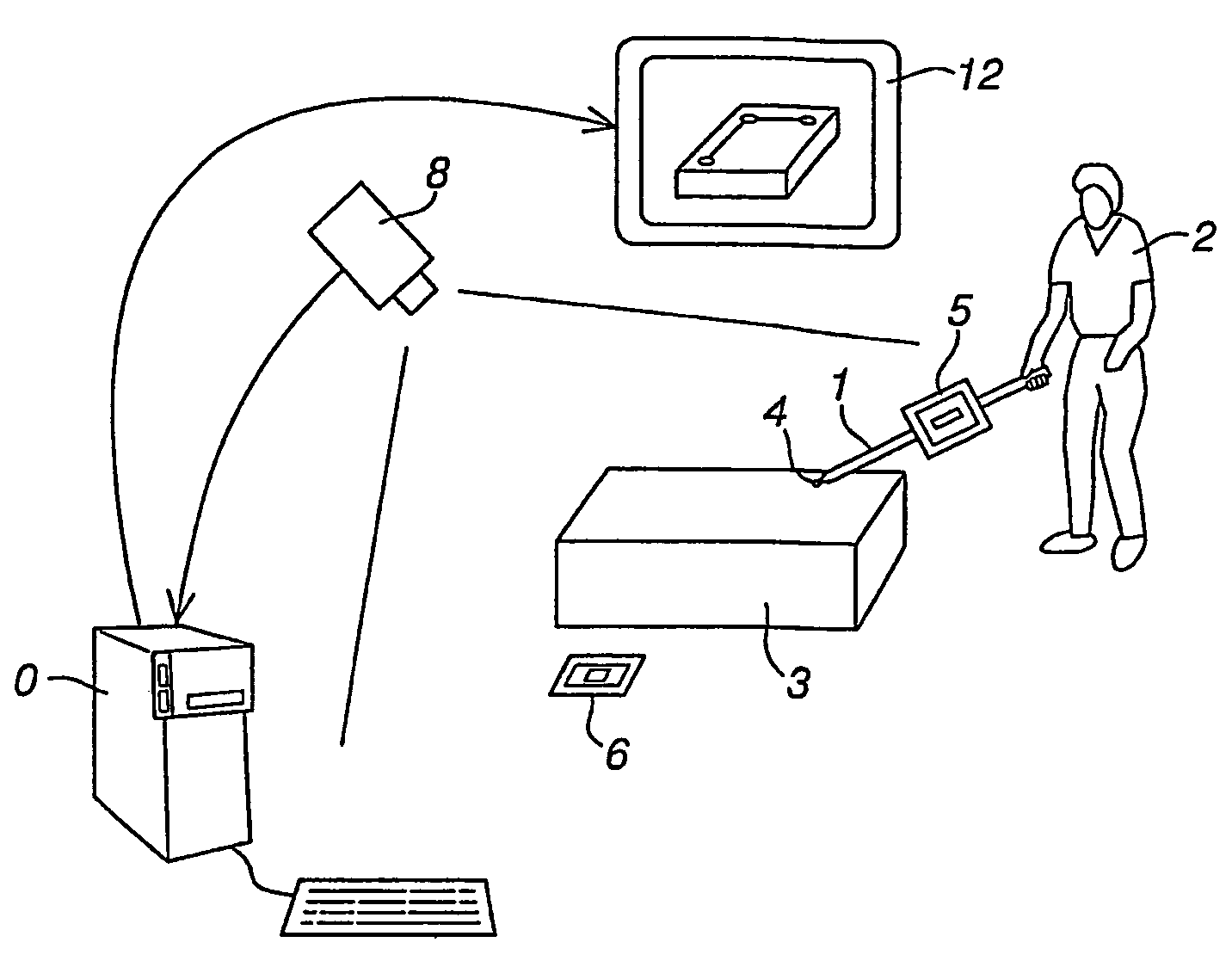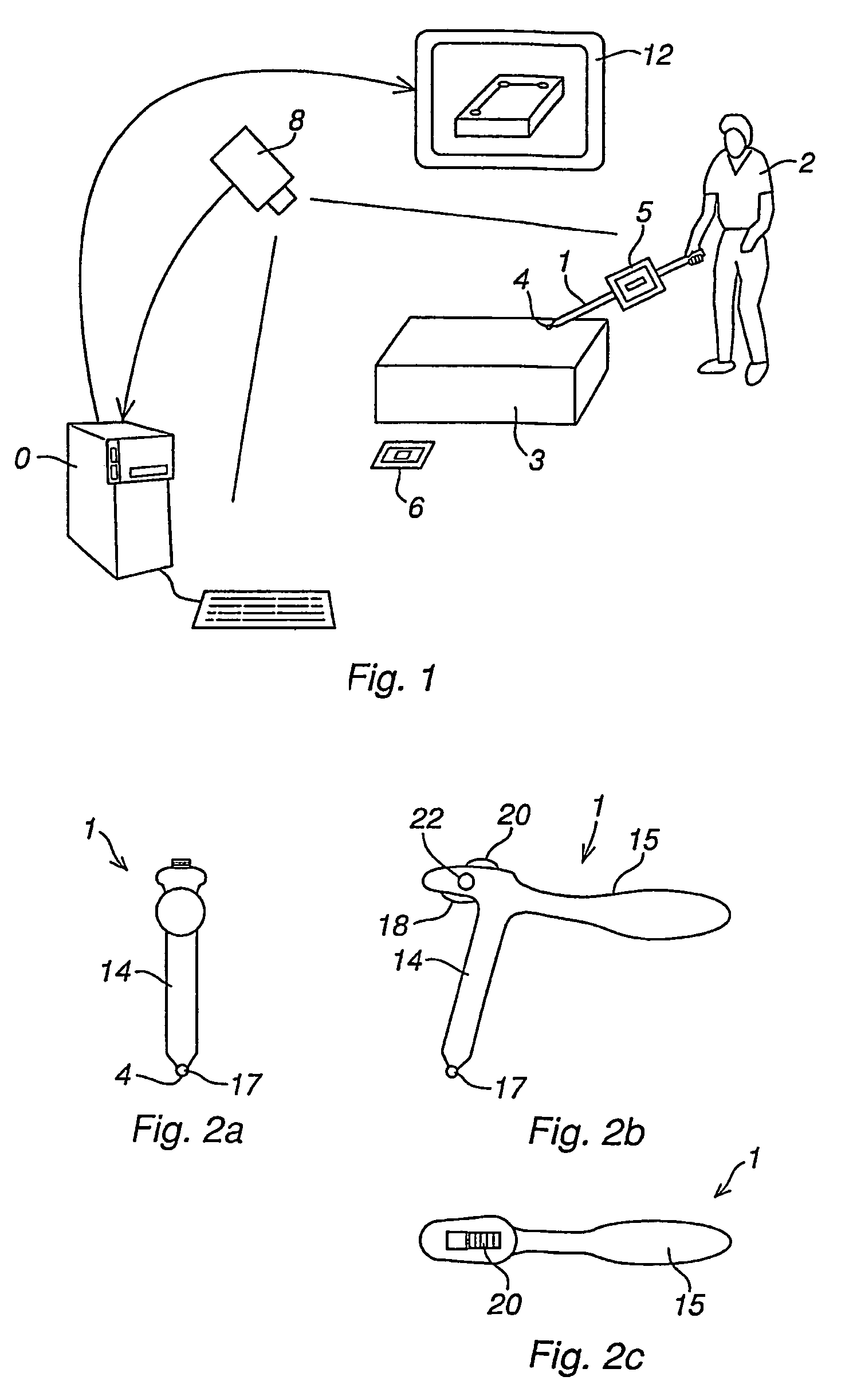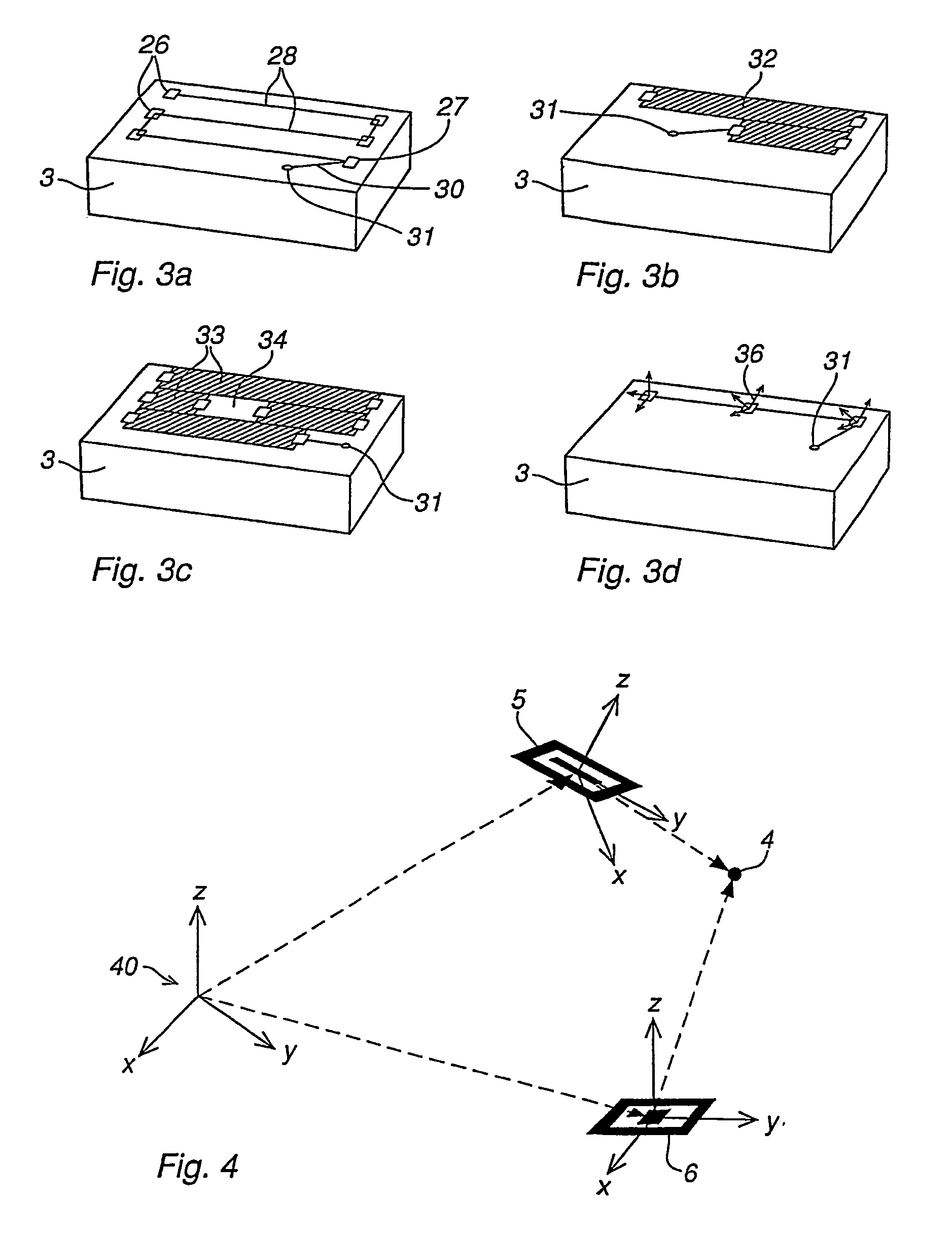Method and a system for programming an industrial robot
a robot and industrial technology, applied in the field of industrial robot programming, can solve the problems of complex cad-system, time-consuming teaching process, trouble,
- Summary
- Abstract
- Description
- Claims
- Application Information
AI Technical Summary
Benefits of technology
Problems solved by technology
Method used
Image
Examples
Embodiment Construction
[0035]FIG. 1 illustrates a system for use in connection with programming of an industrial robot according to the present invention. The system comprises a pointing member 1 utilized by a human operator 2 for teaching the robot how to process an object 3. The pointing member can either be the processing tool itself, or preferably a device particularly adapted for the purpose of teaching the processing of the object. The pointing member could, for example, be a pen shaped device or an imitation of the processing tool, such as a paint-gun. The teaching comprises teaching the robot a path including a number of waypoints given in a specific sequence and located on or in the close vicinity of the object 3. Each waypoint comprises the position of a point on or in a close vicinity of the object, the orientation of a processing tool, such as a paintbrush, in the point, and data related to the processing.
[0036]The operator holds the pointing member 1 in his hand and points at the point he wan...
PUM
 Login to View More
Login to View More Abstract
Description
Claims
Application Information
 Login to View More
Login to View More - R&D
- Intellectual Property
- Life Sciences
- Materials
- Tech Scout
- Unparalleled Data Quality
- Higher Quality Content
- 60% Fewer Hallucinations
Browse by: Latest US Patents, China's latest patents, Technical Efficacy Thesaurus, Application Domain, Technology Topic, Popular Technical Reports.
© 2025 PatSnap. All rights reserved.Legal|Privacy policy|Modern Slavery Act Transparency Statement|Sitemap|About US| Contact US: help@patsnap.com



